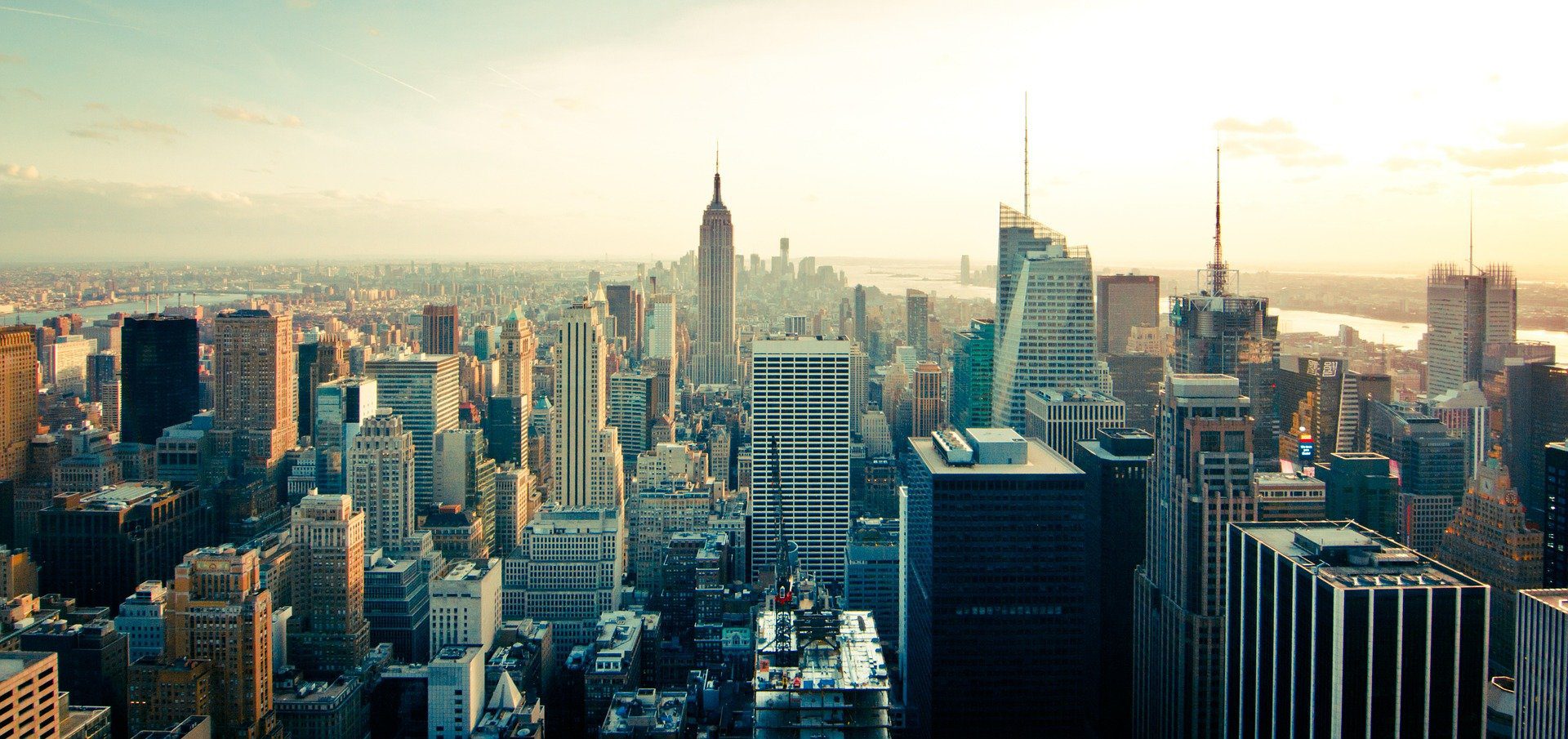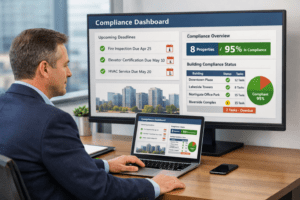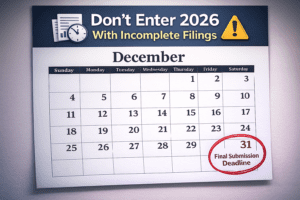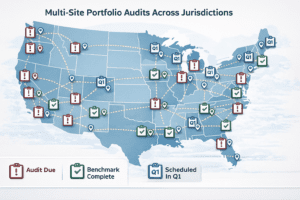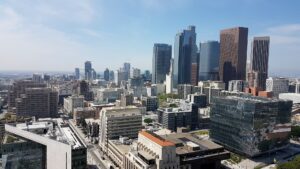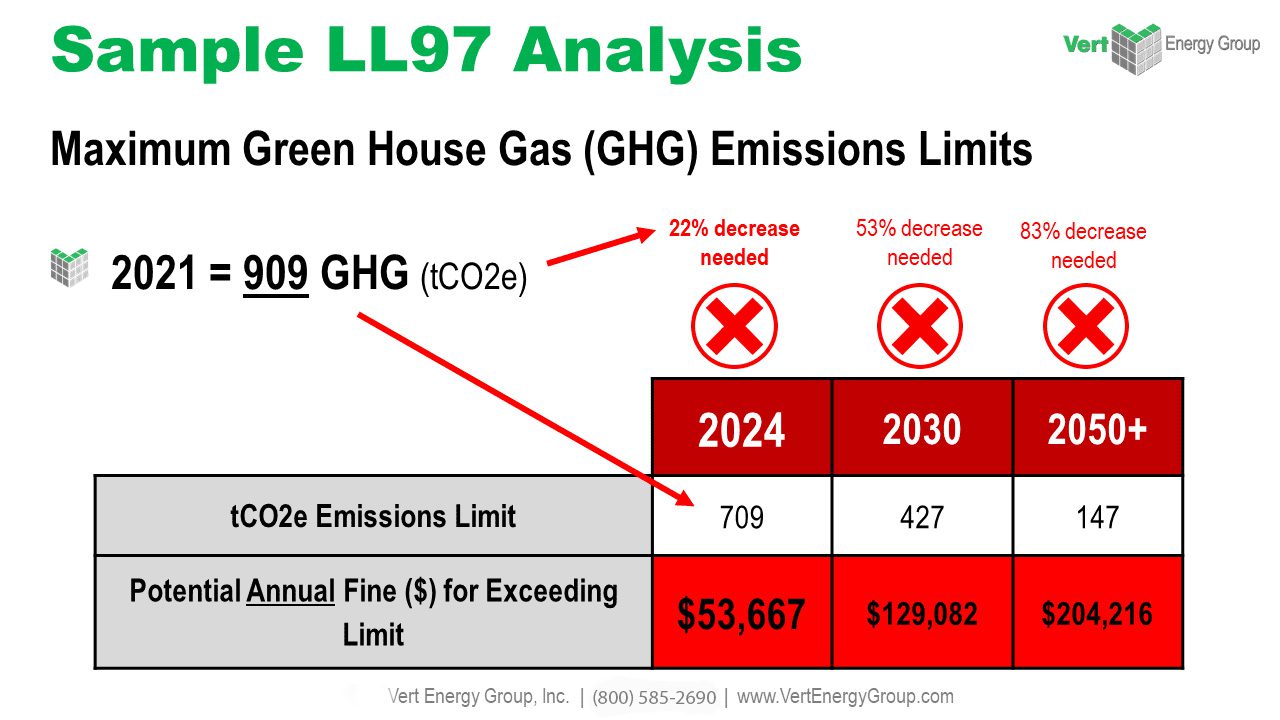On April 18th, 2019, the New York City Council passed Local Law 97 of 2019. This law is a critical piece of NYC’s Climate Mobilization Act and sets into motion many mandatory ordinances for commercial buildings in NYC. The law went into effect on July 1st, 2019 and will be enforced by the NYC Department of Buildings (DOB). In this blog post, we will detail all of the mandatory ordinances for commercial buildings in NYC related to Local Law 97. Each local law has specific compliance requirements that must be met in order to avoid penalties from the DOB.
Local law 97 requires all commercial buildings over 25,000 square feet to comply with new energy efficiency targets. The targets are based on the building’s use type and range from a 20% reduction in emissions by 2030 to a 40% reduction in emissions by 2030. In order to comply with Local Law 97, commercial building owners must submit an annual report to the NYC DOB starting in May of 2020. The report must include information on the building’s energy usage, emissions, and any updates or changes made to the building in order to improve its energy efficiency. Hiring an engineer to perform an energy audit will be necessary in order to complete these reports.
NYC has a great program called NYC Retrofit Accelerator which provides free and impartial energy audits to help commercial building owners identify opportunities to improve their energy efficiency. You can also take advantage of the PACE program. PACE financing is a way to finance energy efficiency and renewable energy upgrades to your property. The upgrades are paid for over time through an assessment on your property tax bill. PACE can finance 100% of eligible project costs and terms can be up to 25 years.
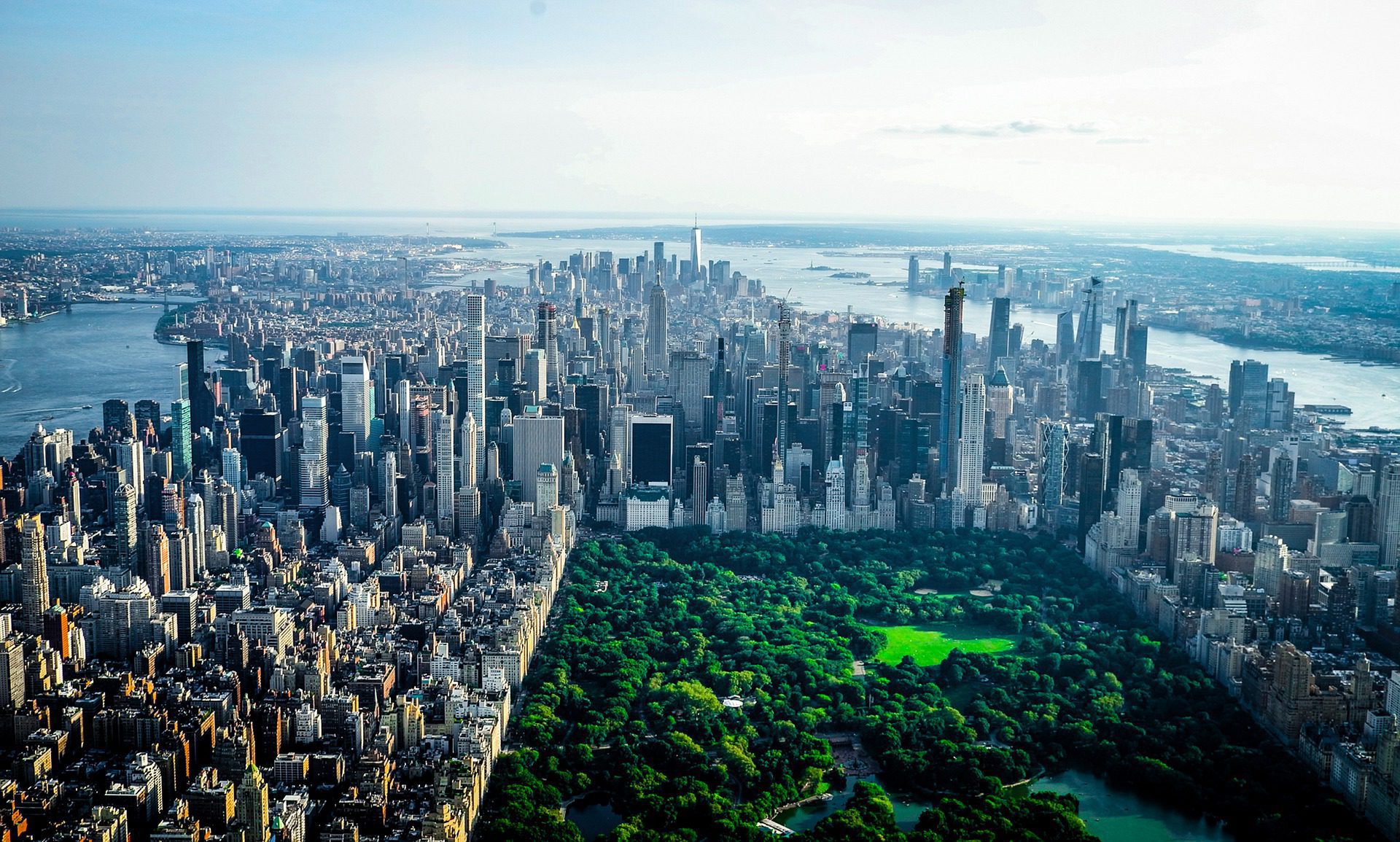
In addition to Local Law 97, there are several other local laws that commercial buildings must comply with. These include:
– Local Law 88: Lighting and Submetering upgrades. All lighting systems in covered buildings must be upgraded to meet the NYC Energy Conservation Code by 2050.
– Local Law 11: Facade Inspections. Exterior walls and appurtenances of buildings six stories or higher must be inspected by a licensed structural engineer. Deadlines vary depending on the tax block # your property is located.
– Local Law 94: Green Roofs. New construction or certain renovations must include a green roofing zone. This roofing area needs to be comprised of a photovoltaic (PV) electricity generating system (Solar Panels) or a green roof. Buildings with greater than 200 square feet of usable roof space will need to install a minimum of 4kW PV electricity generating system. If you can’t install a PV electricity generating system, a green roof system must be utilized.
– Local Law 152: Gas Safety. Launched in 2016, this ordinance establishes periodic safety inspections on gas piping systems in NYC every 4 years. It became fully effective on January 1st, 2020.
– Local Law 84: Benchmarking. All NYC buildings that are larger than 50,000 square feet or have more than $30,000 in annual energy bills must track their energy and water usage on an annual basis. This data must be submitted to the NYC DOB starting in May of 2020.
As you can see, there is quite a bit of things to keep track of when it comes to NYC’s Climate Mobilization Act and the various local laws that have been passed as a result. But, by following these guidelines and requirements, you can be sure that your commercial building is in compliance with all of the necessary regulations. If you have any questions or need help getting started, please don’t hesitate to contact us. Our project advisors can answer any questions you may have regarding these mandates and find you multiple proposals from qualified contractors and engineers should you need any inspections or work completed. Get in contact with a project advisor here: VertPro Upgrades – Simplifying Building Upgrades
NYC’s Climate Mobilization Act is a critical step in combating climate change and protecting the environment. By complying with the mandatory ordinances set forth in this act, commercial building owners can do their part to help NYC reach its goal of reducing greenhouse gas emissions 80% by 2050.
